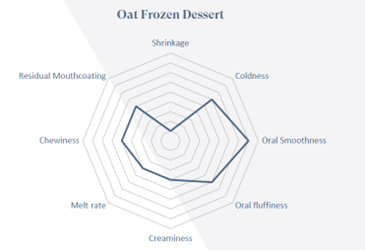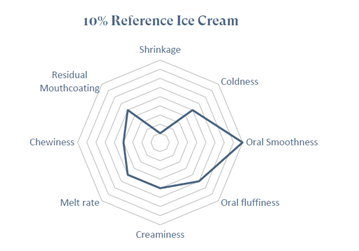The Scoop on Plant-based Frozen Dessert Formulation
by Rachel Weber, Senior Applications Scientist, Dairy, North America
I scream, you scream, we all scream for…. plant-based frozen desserts? Well yes, the trend is heading that way. Consumers are increasingly drawn to products that are plant-based due to the perceived health and sustainability benefits.
As you’ve heard my colleague, Louisa White, mention in her article on plant-based eating behaviors, the biggest limitation for more adoption of plant-based consumption is taste and texture, and consumers, more than ever, want to have it all and feel good about their decisions.
Luckily, Tate & Lyle is well-versed in taking plant-based products from good to great, especially dairy alternatives, but I realize you may still have questions. What are some key factors to consider when formulating? How do you get a creamy, smooth product like ice cream without the traditional dairy components? What solutions can Tate & Lyle offer? Read below to find out more!
To begin, let’s review some key ingredients to consider:

Emulsifiers play a critical role in the appearance and texture of ice cream because they interact with the fat phase to help with whippability, increase overrun, create more uniform air incorporation, and deliver a drier, smoother extrusion. These attributes contribute to sensory descriptions like smoothness, creaminess, fluffiness, better melting rate and mouthcoating. Common emulsifiers include mono & di glycerides, sunflower lecithin, soy lecithin, egg yolks, and polysorbate 80. These emulsifiers have different levels of functionality with some having a better clean label perception than others. Outside of traditional emulsifiers, some ingredients like plant proteins have shown to have emulsifying properties that could aid in improved texture.
Stabilizers provide many functional attributes in a frozen dessert. They serve to reduce ice crystal growth, prevent serum separation, increase mix viscosity, and slow the melting rate. From a textural standpoint, they contribute to sensory characteristics like warmness, smoothness, creaminess, and mouthcoating. Some of the more commonly used stabilizers include locust bean gum, guar gum, tara gum, tamarind seed gum, cellulose gum, and microcrystalline cellulose. Stabilizers are often used in combination to leverage their many benefits. Another advantage of stabilizers is to provide protection when the product is exposed to temperature abuse. Temperature abuse is a series of temperature fluctuations that can occur as products are transported from the factory to the retailer to the consumer. Repeated fluctuations in temperature cause ice crystals to melt and refreeze as well as shrinkage to occur in the carton. Stabilizers help to prevent shrinkage by controlling water migration as well as keep a smooth mouthfeel during consumption by controlling ice crystal size.
Functional Bulking Agents are added to build solids and to enhance the eating experience. With plant-based frozen desserts lacking dairy proteins and often lower in fat, the result is a product that eats colder, is less creamy and lacks mouth coating. Some options to consider include potato starch, tapioca starch, glucose syrup solids, tapioca syrup solids, and soluble corn fiber. These options range in functionality and are usually used in combination to create a soft, scoopable texture, enhance warmness and the overall improved eating experience.
How does it all work?
Below is an example of an oat based frozen dessert with an ice cream like texture developed to be comparable to a standard 10% fat ice cream:


In the sensory chart above, the oat based frozen dessert has a similar textural profile to the 10% reference ice cream. The formulation used the bulking agents to reduce coldness and enhance mouthfeel, the emulsifier mono & di glycerides to enhance creaminess, and stabilizers to help with smoothness, chewiness, and stability. All resulting in a product that is closely to a traditional, 10% fat ice cream product. Crazy, right?
It is possible to close the gap on plant-based taste and texture in frozen desserts. Creating the right matrix with emulsifiers, stabilizers and bulking agents takes experience, knowledge, and the right resources. Whether it’s oat, almond, sunflower, cashew, or coconut based, I’m confident that we can help you deliver a finished product that makes consumers say, “I can’t believe this is plant-based.”

